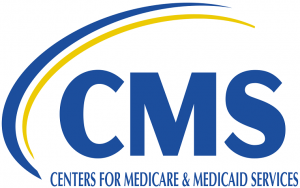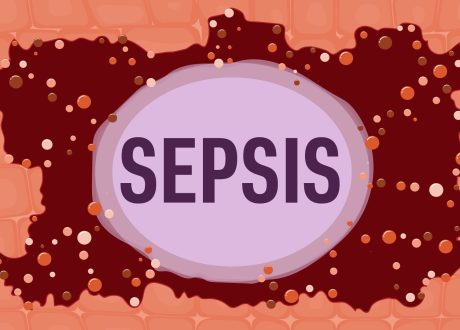Podcast: Play in new window | Download
Reference: Litell et al. Most emergency department patients meeting sepsis criteria are not diagnosed with sepsis at discharge. AEM 2021.
Guest Skeptic: Dr. Jess Monas is a Consultant in the Department of Emergency Medicine at the Mayo Clinic Hospital, Phoenix, Arizona. She is also an Assistant Professor, Department of Emergency Medicine Mayo Clinic Alix School of Medicine in Scottsdale, Arizona. Jess also does the ultra summaries for EMRAP.
Case: A 60-year-old man presents to the emergency department with a non-productive cough and increasing shortness of breath. He has a history of chronic obstructive pulmonary disease (COPD), hypertension (HTN), congestive heart failure (CHF), and benign prostatic hypertrophy (BPH). He’s afebrile. He has a heart rate of 93 beats per minute, a blood pressure of 145/90 mm Hg, respiratory rate of 24 breaths per minute, and an oxygen saturation of 92% on room air.
Initial labs come back with a slightly decreased platelet count (149) and a minimally elevated creatinine (1.21 mg/dl or 107 umol/L). He triggers a sepsis alert, and you get a pop-up suggesting IV antibiotics and 30cc/kg of IV fluids. So, you ask yourself, is this guy really septic and should we bypass those fluids?
Background: We have covered sepsis many times on the SGEM since 2012. This has included the three large RCTs published in 2014-15 comparing early goal-directed therapy (EGDT) to usual care. All three showed no statistical difference between the two treatments for their primary outcome (SGEM#69, SGEM#92 and SGEM#113).
 There was also SGEM#174 which said don’t believe the hype around a Vitamin C Cocktail that was being promoted as a cure for sepsis and SGEM#207 which showed prehospital administration of IV antibiotics did improve time to get them in patients with suspected sepsis, but did not improve all-cause mortality.
There was also SGEM#174 which said don’t believe the hype around a Vitamin C Cocktail that was being promoted as a cure for sepsis and SGEM#207 which showed prehospital administration of IV antibiotics did improve time to get them in patients with suspected sepsis, but did not improve all-cause mortality.
The SGEM was part of a group of clinicians who were concerned about the updated 2018 Surviving Sepsis Campaign (SSC) guidelines. Specifically, the fluid, antibiotics, and pressor requirements within the first hour of being triaged in the emergency department.
Despite the lack of high-quality evidence to support these sepsis bundles, many hospitals incorporated them into their electronic medical record (EMR). They created these sepsis alerts with the intention of identifying septic patients, so they can be treated accordingly. Most physicians agree that antibiotics should be given early in septic patients. However, the jury is still out for other interventions with potential for harm, particularly, the infusion of 30cc/kg of IV fluids.
 Worldwide sepsis contributes to the death of 5.3 million hospitalized people annually. It is the leading cause of death in the intensive care unit (ICU) in the US and the most expensive diagnosis. Since 2015, the Centers for Medicare & Medicaid Services (CMS) have indexed the quality of hospital care for sepsis to the SEP-1 core measure. Interventions, particularly early antibiotics, have been associated with improved mortality.
Worldwide sepsis contributes to the death of 5.3 million hospitalized people annually. It is the leading cause of death in the intensive care unit (ICU) in the US and the most expensive diagnosis. Since 2015, the Centers for Medicare & Medicaid Services (CMS) have indexed the quality of hospital care for sepsis to the SEP-1 core measure. Interventions, particularly early antibiotics, have been associated with improved mortality.
Diagnosing sepsis can be challenging. To adequately capture patients, specificity has been sacrificed for better sensitivity. We care more about catching all the true positives and worry less if a few true negatives get mixed up in there. Using vital signs and lab abnormalities certainly captures more patients, but it also identifies those without an infection. Patients with cirrhosis, toxicities, those on dialysis. It is possible that some of these patients can be at risk for harm from one of these interventions.
CLINICAL QUESTION: WHAT PROPORTIONS OF PATIENTS MEETING SEPSIS CRITERIA WERE ACTUALLY DIAGNOSED WITH SEPSIS, AND HOW MANY NON-SEPTIC PATIENTS HAD RISK FACTORS FOR HARM FROM AGGRESSIVE FLUID RESUSCITATION?
Reference: Litell et al. Most emergency department patients meeting sepsis criteria are not diagnosed with sepsis at discharge. AEM 2021.
- Population: These were adult ED patients presenting to a tertiary academic medical center who met criteria for Sepsis-3 or Sepsis-3 plus shock. Sepsis-3 was defined as patients with a SOFA score ≥ 2 (Sequential Organ Failure Assessment score) and a suspected infection (which they counted if patients were given IV antibiotics within 24 hours of admission). Sepsis-3 plus shock was defined as Sepsis-3 with an initial lactate level > 2 and any systolic blood pressure < 90.
- Excluded: Trauma patients and those with missing ICD-9 codes. This is because prophylactic antibiotics often administered in traumatic or orthopaedic injuries.
- Intervention: N/A
- Comparison: They compared those with a sepsis diagnosis at discharge to those without a sepsis diagnosis at discharge.
- Outcome:
- Primary Outcome: The primary outcome was proportion of ED patients with suspected sepsis based on consensus criteria who were not diagnosed with sepsis at discharge. Basically, they were initially flagged as potentially septic, but didn’t turn out to be.
- Secondary Outcomes: Proportion of non-septic patients at risk of harm from the administration of a rapid weight based IV fluid bolus. The risk factors included congestive heart failure, cirrhosis, dialysis-dependent renal failure, and morbid obesity. They also looked at mortality for Sepsis-3 and Sepsis-3 plus patients.
- Type of Study: Retrospective observational cohort design.
Authors’ Conclusions: “Most patients meeting sepsis criteria in the ED were not diagnosed with sepsis at discharge. This may result in many patients receiving sepsis treatment bundles that has the potential for harm.”
 Quality Checklist for Observational Study:
Quality Checklist for Observational Study:
- Did the study address a clearly focused issue? Yes
- Did the authors use an appropriate method to answer their question? No
- Was the cohort recruited in an acceptable way? Yes
- Was the exposure accurately measured to minimize bias? Yes
- Was the outcome accurately measured to minimize bias? No
- Have the authors identified all-important confounding factors? No
- Was the follow-up of subjects complete enough? Yes
- How precise are the results? Not very
- Do you believe the results? Yes
- Can the results be applied to the local population? Unsure
- Do the results of this study fit with other available evidence? Yes
Results: They identified 4,060 patients who received IV antibiotics and had a SOFA ≥ 2. There were 935 patients excluded because of a primary trauma diagnosis and four with missing ICD-9 codes. There were 3,121 patients meeting Sepsis-3 criteria and 1,032 meeting Sepsis-3 plus shock criteria. The mean age was 60 years and 37% were female.
KEY RESULTS: MOST PATIENTS MEETING SEPSIS CRITERIA WERE NOT DIAGNOSED WITH SEPSIS AT DISCHARGE.
- Primary Outcome: The proportion of ED patients with suspected sepsis based on consensus criteria who were not diagnosed with sepsis at discharge
- 75% of patients meeting Sepsis-3 criteria did not receive an explicit diagnosis of sepsis at discharge and about half (52%) did not receive an implicit diagnosis.
- 52% of patients meeting Sepsis-3 plus shock criteria did not receive an explicit diagnosis of sepsis at discharge and 38% did not receive an implicit diagnosis
- Secondary Outcome:
- Proportion of non-septic patients at risk of harm from the protocolized administration of a rapid weight-based crystalloid bolus.
- About 40% of patients meeting Sepsis-3 criteria and 30% of patients meeting Sepsis-3 plus shock, were not diagnosed with sepsis at discharge, but did have at least one risk factor for harm from large-volume fluid resuscitation.
- About 30% treated for suspected sepsis, had no infectious etiology found. The most common non-infectious diagnoses were overdose, inhalation pneumonitis, acute respiratory failure (asthma, COPD, CHF), DKA and acute renal failure
- 9% mortality in Sepsis-3 patients and 16% in Sepsis-3 plus shock patients









